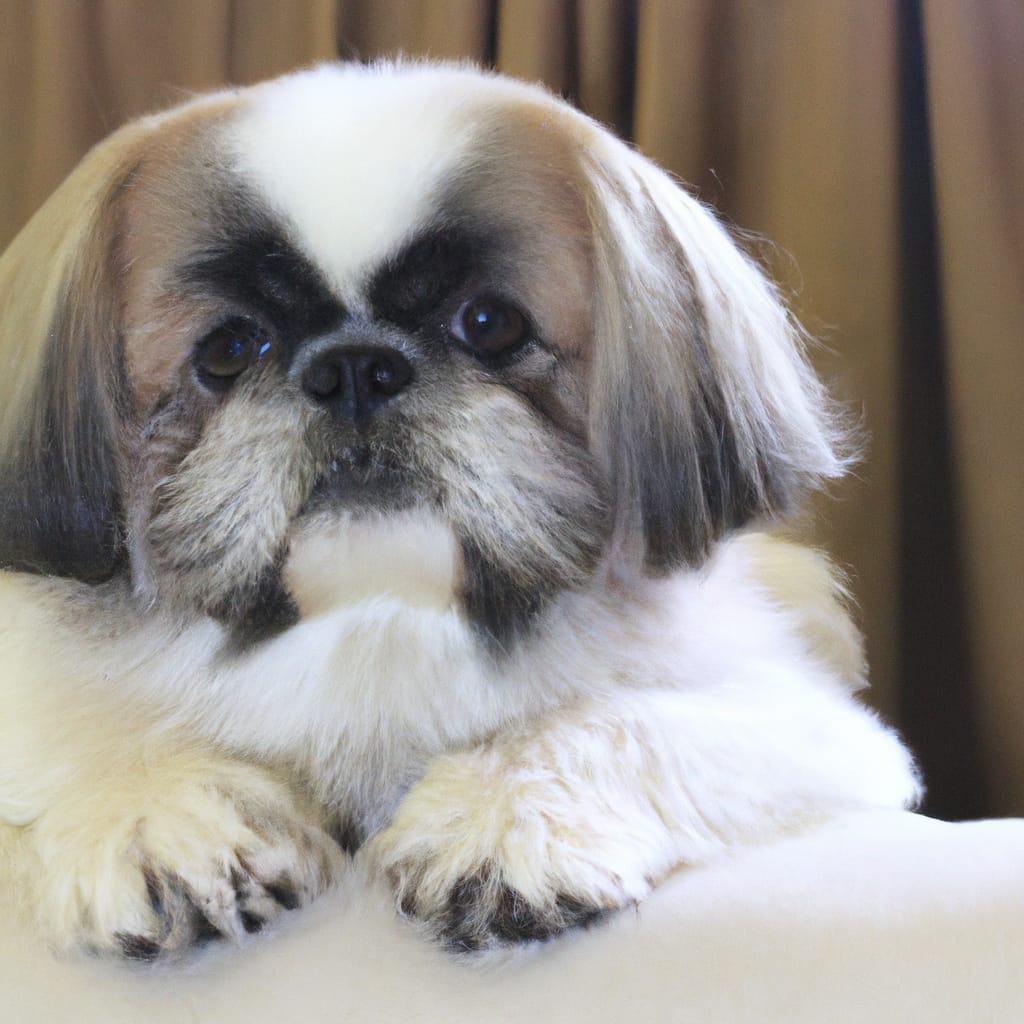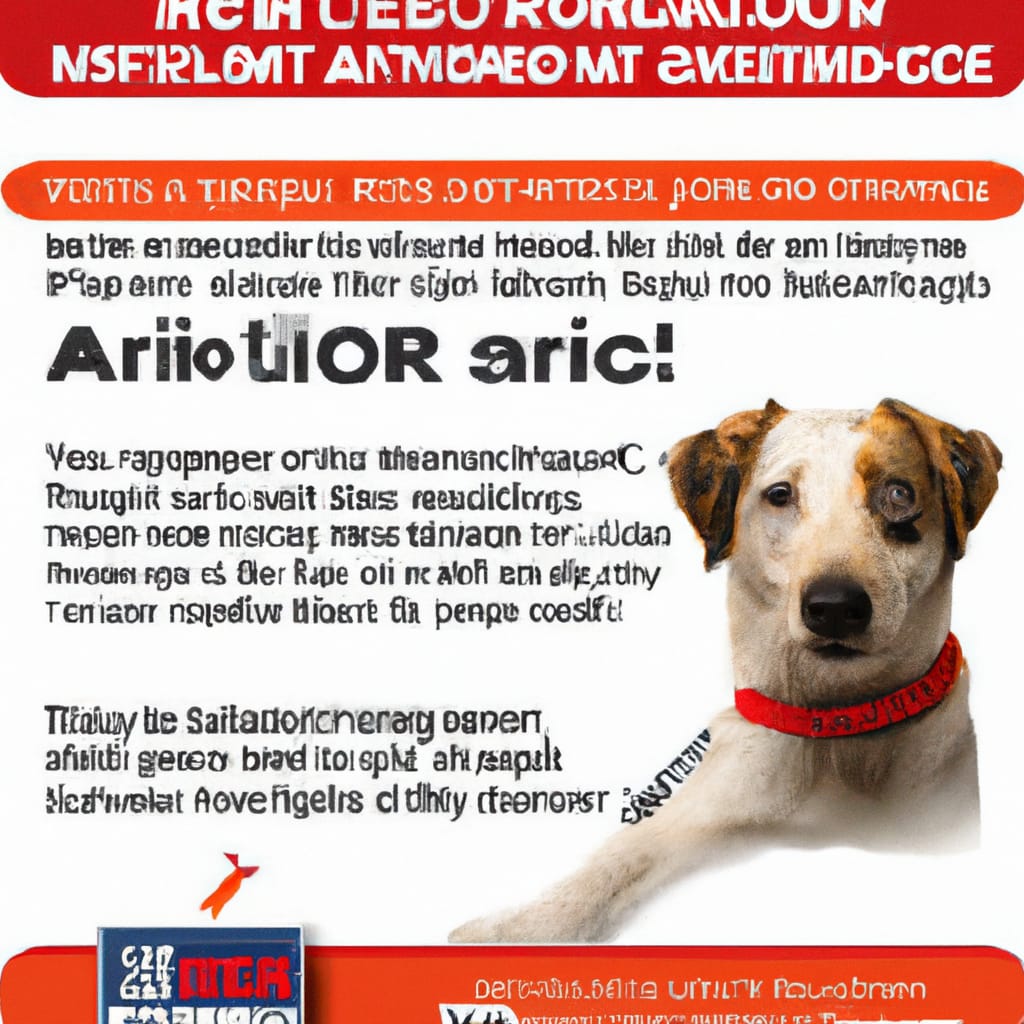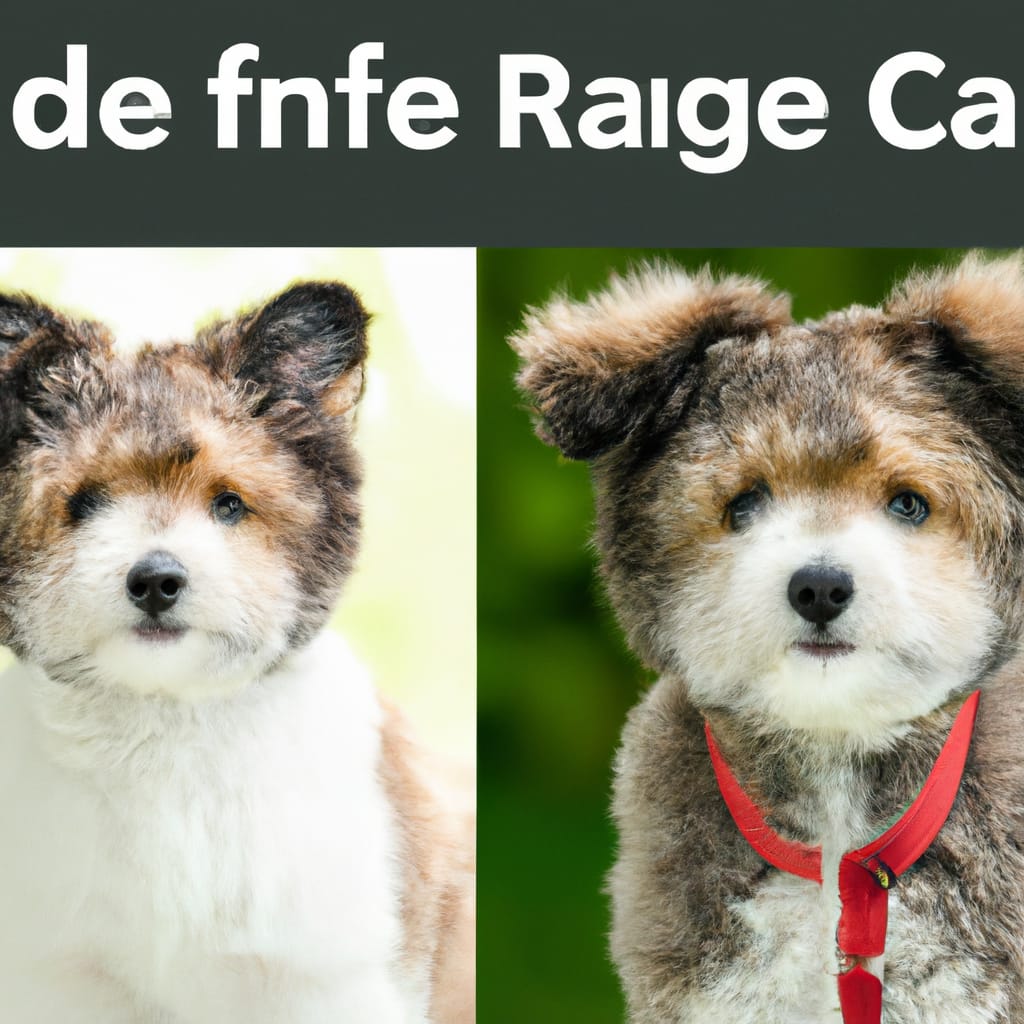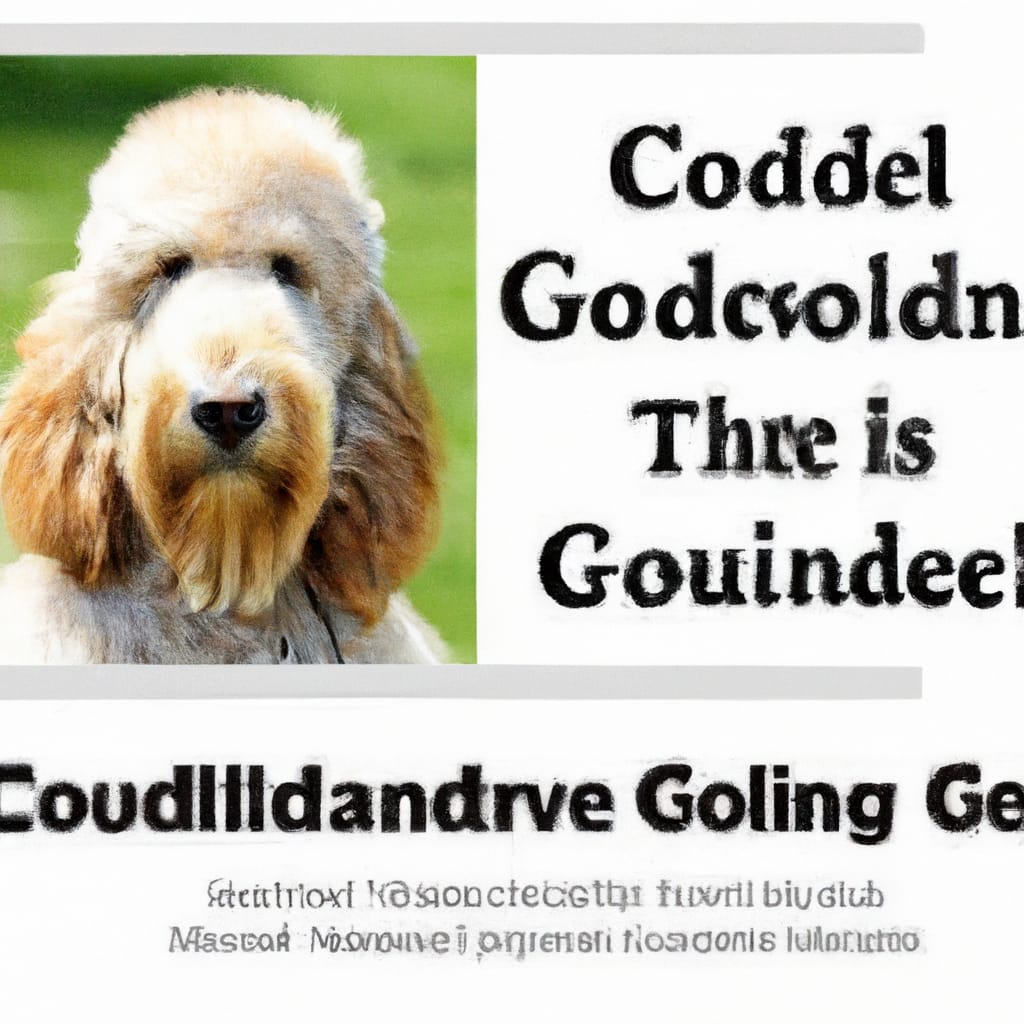Pekingese Vs Shih Tzu: Breed Differences & Similarities
Are you a dog lover who is torn between choosing a Pekingese or a Shih Tzu as your new furry companion? Look no further! In this article, we will explore the fascinating world of these two adorable breeds, highlighting their unique differences and delightful similarities. Whether you are interested in their appearance, temperament, or exercise needs, we’ve got you covered. So sit back, relax, and embark on an exciting journey into the world of Pekingese and Shih Tzu breeds.

Appearance
Size
Both the Pekingese and Shih Tzu are small toy breeds, but they differ slightly in terms of size. The Pekingese typically weighs between 8 to 14 pounds and stands about 6 to 9 inches tall at the shoulder. On the other hand, the Shih Tzu is slightly smaller, weighing between 9 to 16 pounds and standing about 8 to 11 inches tall. Despite their size difference, both breeds have a sturdy and compact build.
Coat
Both the Pekingese and Shih Tzu have luxurious double coats that require regular grooming. The Pekingese has a longer, straight outer coat that is harsh to the touch, while the undercoat is soft and dense. In contrast, the Shih Tzu’s coat is long and flowing, with a soft and silky texture. The Shih Tzu’s coat often requires more maintenance due to its length and tendency to tangle. Both breeds come in a variety of colors and patterns, adding to their unique appearance.
Face
One of the most distinctive features of both the Pekingese and Shih Tzu is their flat, wrinkled face. The Pekingese has a flatter face, with deep-set, dark, and expressive eyes. They have a shorter muzzle, giving them a more pronounced “smooshed” appearance. The Shih Tzu also has a flat face, but their eyes are rounder and slightly more prominent. Their muzzle is slightly longer compared to the Pekingese, but still contributes to their adorable and endearing expression.
Eyes
When it comes to their eyes, both breeds have captivating and soulful gaze. The Pekingese’s eyes are typically dark, large, and round, reflecting their sweet and affectionate nature. The Shih Tzu’s eyes are also large and round, but they can come in various colors, including brown, blue, and even green. Their eyes are often accentuated with long, thick eyelashes, adding to their stunning appearance.
Ears
Both the Pekingese and Shih Tzu have pendulous ears that are set relatively low on the sides of their heads. The Pekingese’s ears are heart-shaped and covered with a profusion of hair, giving them an elegant and regal look. The Shih Tzu’s ears are larger and more pendant, framing their face charmingly. They are also adorned with beautiful flowing hair, which can be further enhanced with grooming accessories.
Tail
The Pekingese and Shih Tzu both have well-feathered tails that curl over their backs. The Pekingese’s tail is set high and carried over the back or to the side. It is covered with long, flowing hair, adding to their overall majestic appearance. The Shih Tzu’s tail also curls over their back and is plumed with abundant, silky hair. Their tail contributes to their elegance and grace, enhancing their overall charm.
Temperament
Personality
Both the Pekingese and Shih Tzu have distinct personalities that make them popular companion dogs. The Pekingese is known for its regal and dignified nature. They are often described as independent, courageous, and even a bit stubborn at times. Despite their small size, Pekingese are known to be fearless and protective of their families. On the other hand, the Shih Tzu is known for its affectionate and friendly nature. They thrive on attention and love being in the company of their human companions. Shih Tzus are generally more sociable and outgoing compared to the Pekingese.
Affection
Both the Pekingese and Shih Tzu are affectionate breeds that form strong bonds with their owners. The Pekingese, while often seen as aloof by strangers, can be extremely devoted and loyal to their family members. They enjoy being near their loved ones and will shower them with affection and love. Similarly, the Shih Tzu is a true lap dog and craves constant companionship. They thrive on human attention and will seek out cuddles and belly rubs whenever possible.
Independence
While both breeds are known for their affectionate nature, the Pekingese tends to display a more independent streak compared to the Shih Tzu. Pekingese are known for their self-assuredness and may not always crave constant attention. They are often content with being by themselves and are not overly demanding. On the other hand, the Shih Tzu thrives on human company and can be more reliant on their owners for affection and companionship.
Trainability
Both the Pekingese and Shih Tzu can be a bit challenging to train due to their stubbornness and independent nature. Pekingese, in particular, have a mind of their own and may have a tendency to be slightly more difficult to train. However, with consistency, positive reinforcement, and patience, they can still learn basic commands and house training. Shih Tzus are generally more eager to please their owners, which can make them slightly easier to train. It’s important to use positive reinforcement techniques and keep training sessions short and engaging for both breeds.
Compatibility with Children
Both the Pekingese and Shih Tzu can get along well with children, but there are certain considerations to keep in mind. Pekingese, being a small breed, are more susceptible to accidental injuries from rough handling by young children. They may also have a low tolerance for excessive noise and chaos, so proper supervision and guidance are crucial. Shih Tzus, on the other hand, are generally more patient and tolerant of children. They can adapt well to family environments, but it’s still important to teach children how to interact respectfully with these small dogs to avoid any mishaps.
Compatibility with Other Pets
Both the Pekingese and Shih Tzu can coexist peacefully with other pets if properly socialized. Pekingese, being more independent, may be less inclined to seek the company of other animals. However, they can generally get along well with other dogs and cats if introduced gradually and given time to adjust. Shih Tzus are generally more sociable and tend to enjoy the company of other pets. Proper introductions and supervised interactions are key to ensure a harmonious relationship between these breeds and other animals in the household.
Exercise and Activity Levels
Exercise Needs
Both the Pekingese and Shih Tzu have relatively low exercise needs, making them suitable for owners with a more relaxed lifestyle. Pekingese are known for their ability to adapt to apartment living and do not require extensive exercise. A daily walk or some playtime indoors can be sufficient to meet their exercise needs. Shih Tzus also have moderate exercise requirements, enjoying short walks and interactive play sessions. However, it’s important not to overexert these breeds due to their shorter muzzles, which can make breathing more difficult during strenuous activities.
Playfulness
While both breeds can be playful, the Shih Tzu tends to be slightly more active and playful compared to the Pekingese. Shih Tzus enjoy interactive play sessions, such as fetching toys or playing with puzzle toys. They have a playful nature that can keep their owners entertained. Pekingese, although not as high-energy as some other breeds, still have a playful side and can engage in short bursts of activity. They may enjoy playing with their favorite toys or engaging in gentle play sessions with their owners.
Energy Levels
Both the Pekingese and Shih Tzu have moderate energy levels. They are not overly energetic breeds and are usually content with short bursts of activity followed by long periods of relaxation. While they can be playful and engaging, they are generally more inclined towards a calm and laid-back lifestyle. They enjoy lounging on the couch or snuggling up with their owners. However, it’s still important to provide them with mental stimulation and regular exercise to prevent obesity and ensure their overall well-being.
Outdoor vs Indoor Preferences
Both the Pekingese and Shih Tzu are well-suited for indoor living. They are not particularly fond of extreme temperatures and are best kept in a climate-controlled environment. Pekingese, in particular, are more at risk of heatstroke due to their brachycephalic (flat-faced) structure, so they should be protected from hot weather. Both breeds are prone to respiratory issues, and having a controlled indoor environment can help minimize these risks. However, they should still be given opportunities for short outdoor walks or supervised playtime in a secure and safe area.
Suitability for Apartment Living
Both the Pekingese and Shih Tzu are highly suitable for apartment living. Their small size and moderate exercise needs make them adaptable to living in smaller spaces. They are generally quiet breeds and do not have excessive barking tendencies, which is an important consideration for apartment dwellers. However, it’s important to ensure that they still receive regular exercise and mental stimulation, even in a smaller living space. Taking them for short walks, providing them with interactive toys, and engaging in play sessions indoors can help keep them content and happy.
Grooming
Coat Maintenance
Both the Pekingese and Shih Tzu have long, flowing coats that require regular maintenance. The Pekingese’s coat should be brushed at least a few times a week to prevent tangles and mats. Regular grooming can help distribute the natural oils in their coat and keep it healthy and shiny. The Shih Tzu’s coat is even longer and requires daily brushing to prevent tangles and keep it looking its best. Both breeds also benefit from regular trimming of the hair around their eyes, ears, and paws to maintain good hygiene.
Bathing
Both breeds should be bathed regularly to keep their coat and skin clean and healthy. The frequency of bathing depends on the individual dog and their level of outdoor activity and exposure to dirt. Pekingese generally have a slightly oily coat, so they may need baths more often than the Shih Tzu. It’s important to use a gentle dog shampoo that is specifically formulated for their delicate skin. It’s also crucial to thoroughly dry their coats after bathing to prevent skin irritation and fungal infections.
Brushing
Regular brushing is essential for both the Pekingese and Shih Tzu to keep their long coats in top condition. Brushing helps remove any loose hair, prevent tangles and mats, and distribute natural oils throughout their coat. Pekingese often benefit from using a slicker brush or a comb with finer teeth to reach the dense undercoat. The Shih Tzu’s coat can be more easily managed with a combination of a slicker brush and a pin brush. Regular brushing sessions can also help strengthen the bond between the dog and owner.
Haircuts
Due to their long coats, both breeds may require haircuts to keep their fur manageable and prevent discomfort. A professional groomer can help trim their coat, especially around the ears, paws, and private areas, where tangles and mats are more likely to occur. Some owners prefer to keep their Pekingese’s coat long and flowing, while others opt for a shorter and more manageable cut. Shih Tzus are often styled in various cuts, such as the “puppy cut” or the more elaborate “topknot” style. Regular haircuts help keep both breeds looking tidy and prevent their hair from dragging on the ground.
Shedding
Both the Pekingese and Shih Tzu are considered moderate shedders. While they have a long and dense coat, they do not shed excessively like some other breeds. However, regular brushing and grooming play a crucial role in managing loose hair and preventing it from accumulating in the home. Removing loose hair through regular brushing can also help minimize shedding. It’s important to note that shedding can be influenced by factors such as diet, health, and hormonal changes, so individual dogs may vary in their shedding patterns.
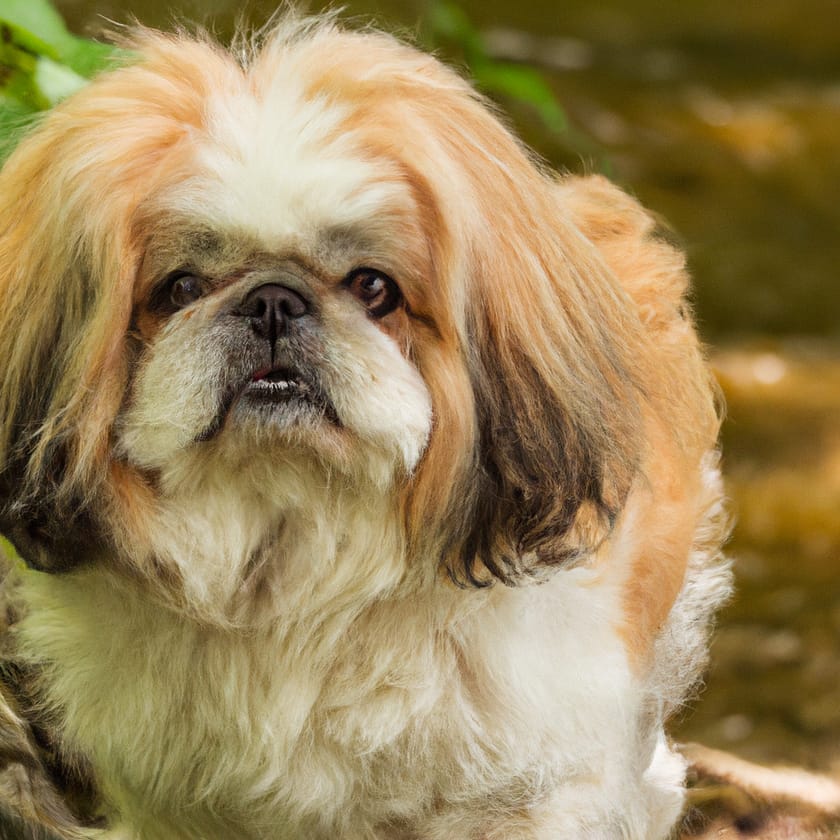
Health
Common Health Issues
Both the Pekingese and Shih Tzu are generally healthy breeds but are prone to certain health issues due to their brachycephalic (flat-faced) structure and genetic makeup. Some common health concerns for both breeds include respiratory problems, eye conditions such as cataracts and progressive retinal atrophy, dental issues, skin allergies, and back problems. Regular veterinary check-ups, a balanced diet, proper dental care, and providing a safe and suitable environment can help minimize the risk of these health issues.
Life Expectancy
On average, both the Pekingese and Shih Tzu have a life expectancy of approximately 12 to 15 years. However, with proper care, a healthy lifestyle, and regular veterinary check-ups, they can often live beyond their expected lifespan. Genetics, diet, exercise, and overall care play significant roles in determining an individual dog’s longevity. Providing a nurturing and loving environment, along with proper healthcare, can help ensure that both breeds live a happy and healthy life.
Vulnerability to Weather
Due to their brachycephalic structure and relatively short noses, both the Pekingese and Shih Tzu are more susceptible to temperature extremes. They are prone to overheating in hot weather and can experience breathing difficulties in high humidity. It is essential to provide them with a cool and shaded environment during hot weather and limit their exposure to extreme temperatures. During cold weather, they may require additional protection, such as sweaters or jackets, to keep them warm. Monitoring their comfort and well-being during different weather conditions is essential to keep them safe and healthy.
Eye Problems
Both the Pekingese and Shih Tzu are prone to various eye problems, which can be attributed to their protruding eyes and genetic predisposition. Common eye issues include corneal ulcers, dry eye (keratoconjunctivitis sicca), retinal problems, and issues related to eyelashes and tear ducts. Regular eye examinations by a veterinarian and proper eye care, such as cleaning the area around the eyes and providing a suitable diet, can help minimize the risk of these problems. Prompt treatment and addressing any signs of discomfort or irritation in their eyes are crucial for their overall eye health.
Breathing and Respiratory Problems
Both the Pekingese and Shih Tzu can experience breathing difficulties due to their brachycephalic (flat-faced) structure. They may snort, wheeze, or struggle to catch their breath, especially during hot weather or strenuous activities. The elongated soft palate, narrow nostrils, and smaller windpipe can contribute to respiratory issues in these breeds. Maintaining a healthy weight, avoiding excessive physical exertion, and providing a calm and stress-free environment can help minimize breathing problems. It’s important to consult with a veterinarian if breathing difficulties or any signs of distress are observed.
History and Origin
Pekingese
The Pekingese breed has a rich history that dates back over 2,000 years. Originating in China, they were considered sacred and were exclusively owned by Chinese nobility and members of the imperial court. The Pekingese were highly valued and treasured for their regal appearance and symbolized good luck and protection. They were selectively bred to resemble small lions, as they were believed to bring their owners luck and ward off evil spirits. The breed’s name comes from Peking, which is now known as Beijing, the capital of China.
Shih Tzu
The Shih Tzu also has its roots in ancient China and shares similarities with the Pekingese in terms of their royal connections. They were bred as companion dogs for Chinese royalty during the Ming Dynasty and were often given as gifts to other royal families and esteemed individuals. The name “Shih Tzu” translates to “lion dog” in Mandarin, further accentuating their connection to nobility. They were highly regarded for their beauty, gentle nature, and resemblance to lions or mythical creatures. The Shih Tzu is believed to be a cross between the Pekingese and the Tibetan Lhasa Apso.
Popularity and Recognition
Popularity Rankings
Both the Pekingese and Shih Tzu consistently rank among the popular toy breeds worldwide. In terms of popularity rankings, the American Kennel Club (AKC) ranks the Shih Tzu slightly higher, usually within the top 20 most popular breeds in the United States. The Pekingese also enjoys a significant following and is consistently ranked within the top 100 most popular breeds. Both breeds are sought after for their distinctive appearance, affectionate nature, and suitability as companion dogs.
Recognition by Kennel Clubs
Both the Pekingese and Shih Tzu enjoy recognition by major kennel clubs and breed organizations worldwide. The American Kennel Club (AKC) officially recognizes both breeds as members of the Toy Group. The Pekingese has been recognized by the AKC since 1906, while the Shih Tzu was officially recognized in 1969. These breed organizations play an influential role in preserving breed standards, promoting responsible breeding practices, and organizing dog shows and events that showcase the unique qualities and talents of these breeds.
Training and Obedience
Training Intelligence
Both the Pekingese and Shih Tzu exhibit an average level of intelligence when it comes to obedience and training. While they may not top the charts in terms of trainability, they are still capable of learning and following basic commands and house rules. However, it’s important to approach their training with patience, consistency, and positive reinforcement techniques. Understanding their independent nature and finding training methods that align with their personality can help achieve better results.
Training Difficulty
Due to their independent and occasionally stubborn nature, both the Pekingese and Shih Tzu can pose some training challenges. They may have a natural inclination to do things their own way and may require extra motivation and patience during training sessions. Short and engaging training sessions, using treats and positive reinforcement, can help overcome these challenges. It’s important to keep training sessions fun and rewarding to maintain their interest and cooperation.
Obedience
Both breeds may have a reputation for being a bit independent, but they can still exhibit obedience when properly trained and motivated. Consistency and firm yet gentle guidance are important when teaching them basic obedience commands. Positive reinforcement, such as treats and praise, can be effective in motivating both breeds. It’s important to establish clear boundaries and rules to ensure that they understand their role in the household and their expected behavior.
Socialization
Proper socialization is crucial for both the Pekingese and Shih Tzu to ensure they grow up to be well-rounded and confident dogs. Early exposure to different people, animals, and environments can help prevent shyness or fearfulness. Both breeds should be gradually introduced to new experiences, such as different sounds, sights, and situations, in a positive and controlled manner. Puppy socialization classes and supervised playdates with other friendly dogs can also help in their development. Well-socialized Pekingese and Shih Tzus are generally more adaptable and make better family pets.
Suitability as a Family Pet
Family Friendliness
Both the Pekingese and Shih Tzu can make excellent family pets, but there are certain considerations to keep in mind. Due to their small size, they may be better suited for families with older children who can handle them gently. Both breeds thrive on human companionship and enjoy being a part of the family’s daily activities. They can form strong bonds with their family members and provide endless love and affection.
Good with Kids
While both breeds can be good with children, it’s essential to teach children how to interact respectfully with these small dogs. Pekingese, being a bit more independent and guarded, may not appreciate rough handling or excessive loud noises. Shih Tzus, being generally more sociable and adaptable, often do well with children. However, proper supervision and guidance are crucial to ensure a safe and harmonious relationship between the dogs and children. Children should be taught to treat these small breeds with care and respect.
Adaptability
Both the Pekingese and Shih Tzu are adaptable breeds that can adjust well to different living environments, including apartments or houses. They are generally content as long as they have their human family nearby. However, changes in routine or environment may require some adjustment time. Their adaptability is influenced by their early socialization, exposure to various situations, and the love and care provided by their owners.
Loyalty
Both breeds are known for their loyalty and devotion to their families. They form strong bonds with their owners and are often protective of them. Pekingese are particularly known for their loyalty and can be fiercely protective of their loved ones. The Shih Tzu, with their affectionate nature, also exhibits a strong bond with their owners. They are known to be loyal companions who enjoy showering their family with love and attention.
Conclusion
While the Pekingese and Shih Tzu have their differences in terms of appearance, temperament, and exercise needs, both breeds share many endearing qualities. Whether you choose the regal and independent nature of a Pekingese or the affectionate and sociable personality of a Shih Tzu, both breeds can make wonderful and loyal companions. With their luxurious coats, distinctive facial features, and loving nature, these toy breeds bring joy, laughter, and endless love to their families. Consider your lifestyle, preferences, and commitment to grooming and training when choosing the perfect breed for you, and enjoy the wonderful journey of sharing your life with a Pekingese or Shih Tzu.


